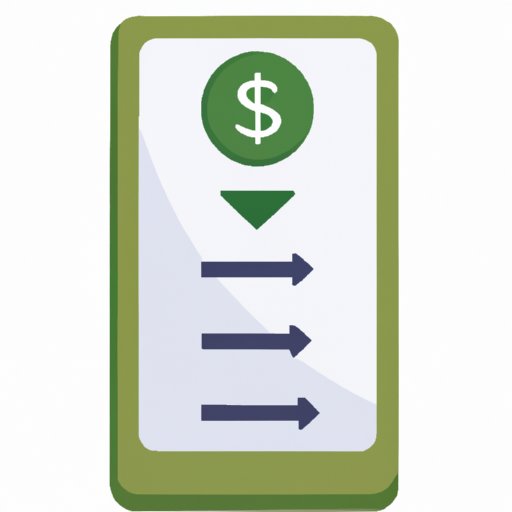
7 Ways to Load a Cash App Card
Cash App is a cash transfer app that has become increasingly popular over the years. It allows users to send and receive money, make purchases, and even invest in cryptocurrency. One of the most convenient features of Cash App is the ability to load money onto a Cash App card. However, some users often face the challenge of not knowing where to load their Cash App card. In this article, we will explore the different ways you can load a Cash App card, the benefits and drawbacks to each method, fees involved, and offer tips to ensure a smooth experience.
Section 1: Retail Locations
You can visit different retail locations such as Walmart, Target, Dollar General, 7-Eleven, and CVS Pharmacy stores to load your Cash App card. The process is simple and involves:
- Opening your Cash App and selecting “Add Cash.”
- Enter the amount you want to add and select “Add.”
- At checkout, provide the cashier with your Cash App account number or debit card linked to your account to load the funds onto the card.
Most retail locations charge a small fee, which can be between $2 – $5, to load your Cash App card. While the fees might not seem significant, it’s essential to keep them in mind when deciding where to load your card. Additionally, ensure you have the funds available in your Cash App account to cover the transaction. Paying insufficient funds may result in penalty fees.
Section 2: Bank Transfers
Transferring funds from a connected bank account to your Cash App card is another way to load your card. This method is free and involves:
- Log in to your Cash App account and select “Add Cash.”
- Select “Bank Transfer” and enter the amount you want to transfer.
- Select the bank account to transfer the funds from and confirm the transaction.
There may be limits on how much you can add until verified. Be sure to check those on the app if you’re adding fewer amounts.
It’s important to note that bank transfers can take several business days to complete, depending on the bank and the amount being transferred. Additionally, some banks may charge a separate transaction fee. Keep these factors in mind when selecting the bank transfer method.
Section 3: Money Transfers
You can send money to Cash App users or even directly to your Cash App account/card. To transfer money to your Cash App card:
- Open your Cash App account and select “Cash & BTC.”
- Select “Add Cash.”
- Select the amount you want to add, and then “Add.”
- Select “Add Cash” again.
- Select “Use CVV Instead” and enter your card information.
Additionally, other Cash App users can send you funds to your Cash App card. This process is straightforward and involves:
- Open Cash App and select the “$” option at the bottom of the screen.
- Enter the amount to be transferred and tap “Request.”
- Select the individual from your contact list to send the request to.
- The individual would receive the request, approve, and the funds will be transferred to your card.
Potential scammers could take advantage of the willingness of people to assist by making fake promises of sending money through social media. Be cautious and report such incidents, immediately such activity happens.
Section 4: Direct Deposits
Cash App allows you to set up direct deposit into your Cash App account/card. A unique routing and account number is provided on the app for the process. The benefits of direct deposit include:
- Reduced hassle of waiting for checks to clear in the bank
- Instant access to paychecks without visiting a bank
However, be mindful of possible fees associated with various direct deposit features, including early access to funds. To set up direct deposit:
- Open your Cash App account and select “My Cash.”
- Select “Direct Deposit” under the options.
- Select “Get Account Number.”
- Provide the account number and routing number to your employer.
Section 5: Checking Accounts
Cash App allows users to connect their Cash App cards to their checking accounts, a feature similar to bank transfers. You can use the routing and account numbers provided in the app to add funds from your checking account to your Cash App card. This method is simple and does not involve fees; however, some banks may charge a transaction fee or limit the amount you can transfer.
Section 6: Bitcoin
Finally, you can add funds to your Cash App card by buying and selling Bitcoin. The process is straightforward and involves:
- Open your Cash App and select “Investing.”
- Select “Bitcoin.”
- Select “Buy” and enter the amount of Bitcoin you would like to purchase.
- Select “Deposit” and transfer the Bitcoin to your Cash App card.
It’s important to note that Bitcoin is a volatile currency, and investing in it comes with risks that users must be aware of before purchasing.
Section 7: Third-Party Apps
Finally, some third-party apps and services let you add funds to your Cash App card. These apps include PayPal, Venmo, and Stripe, which typically involve a transaction fee. One setback of this method is that it might take longer than other ways of adding funds. Before using a third party app, be sure to research it and ensure that it provides a safe connection to your account.
Conclusion
Loading your Cash App card is easy and convenient, with various options available for users. Although each of the above methods has its pros and cons, understanding these features and conditions can help you make an informed choice. By using any of these methods outlined in this article, users can enjoy all the functionalities that come with Cash App without spending too much time or money.




